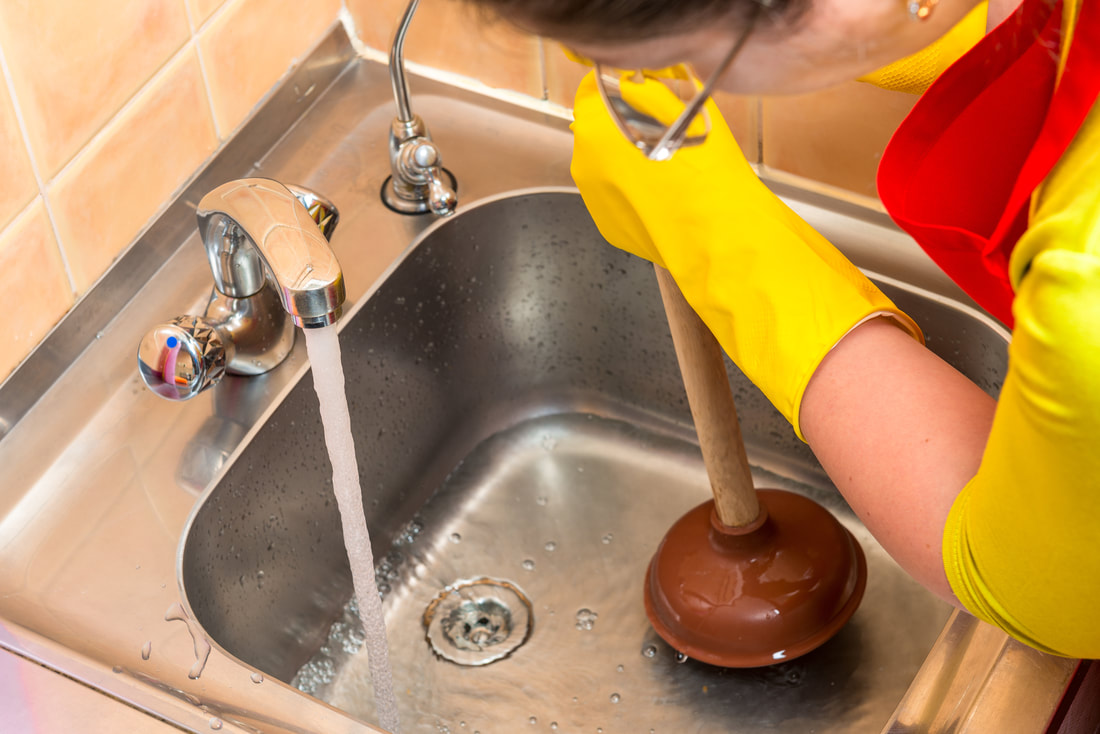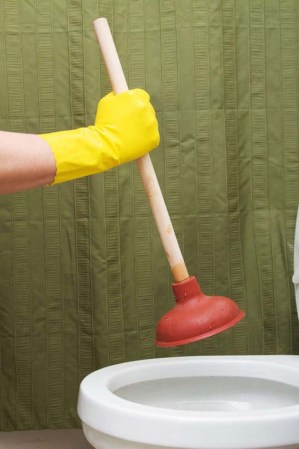Mastering Plunger and Drain Cleaner: Essential Advice
Mastering Plunger and Drain Cleaner: Essential Advice
Blog Article
Any individual has his or her own rationale involving A Guide to Plungers (and How to Use Them).

Intro
Proper maintenance of house drains is necessary for stopping obstructions and making sure smooth water flow. One of the trick devices in every home owner's toolkit is the plunger, along with numerous drain cleaners made to deal with stubborn clogs successfully. This article discovers how to make use of plungers and drain cleansers properly to maintain your drains moving easily.
Area 1: Recognizing Bettors
Kinds of Plungers
There are a number of sorts of plungers offered, each designed for different kinds of drains pipes and clogs. The most usual kinds consist of mug plungers, flange bettors, and accordion plungers.
Just How Plungers Job
Plungers work on the concept of creating stress and suction to remove blockages. When effectively used over a drain, they create a vacuum that can pull out debris or break up clogs.
Selecting the Right Plunger
Choosing the appropriate bettor depends upon the kind of drain and the nature of the clog. Mug plungers are perfect for sinks and tubs, while flange bettors are better suited for commodes due to their design.
Typical Blunders with Plungers
Staying clear of these errors makes sure reliable plunging: improper seal around the drainpipe, inadequate pressure, and unclear bordering particles.
Area 2: Making Use Of Plungers Successfully
Preparation
Prior to diving, guarantee the bettor covers the drain completely and creates a tight seal. Clear any kind of visible particles around the drain opening.
Strategy
Start with gentle plunging motions to develop suction. Rise stress slowly, making use of a constant rhythm. Repeat as essential up until the drainpipe gets rid of.
Troubleshooting Tips
If diving does not work, try readjusting the seal, applying petroleum jelly for a better seal, or using a various type of bettor.
Area 3: Understanding Drain Cleansers
Types of Drainpipe Cleaners
Drain pipes cleaners can be chemical or chemical. Chemical cleansers make use of strong chemicals to liquify obstructions, while enzymatic cleaners use all-natural enzymes to break down organic matter.
Just How Drain Cleaners Job
Chemical cleansers respond with clogs to dissolve them, while enzymatic cleaners break down natural materials like hair and oil without hurting pipelines.
Security Considerations
Constantly put on gloves and eye protection when making use of chemical drainpipe cleansers. Guarantee sufficient ventilation and follow manufacturer instructions carefully.
Eco-Friendly Alternatives
Think about utilizing vinegar and baking soda or enzyme-based cleansers for environmentally friendly options that are much safer for pipelines and the environment.
Section 4: Using Drain Cleansers Successfully
Application Techniques
Put chemical cleaners straight into the drainpipe opening. Allow them to help the advised time prior to flushing with hot water. Chemical cleansers ought to sit over night.
Safety measures
Avoid mixing various kinds of cleansers, as this can create hazardous fumes. Never ever utilize chemical cleaners together with a bettor, as splashing can occur.
Managing Stubborn Clogs
For consistent blockages, think about using a plumbing snake or calling a professional plumbing professional to stop damage to pipelines.
Verdict
Finally, comprehending how to utilize bettors and drain cleansers effectively is crucial for preserving healthy and balanced pipes systems. By selecting the right tools and methods, homeowners can take on minor obstructions and protect against major plumbing problems down the line.
How To Properly Use A Plumbing Snake To Clear Drains
When any drain clogs in our home arise, we tend to gravitate toward the plunger and little else. In cases where the plunger and its vacuum-created pressure are not able to clear clogs, many immediately move to harmful chemicals or simply call their plumber to fix the issue.
we’re happy to help with all drain cleaning needs and concerns. This includes informing you on a few other home remedies you may have at your disposal for minor to moderate clogs, one of which is the use of a plumbing snake. Many people have never used one of these before – let’s go over the steps to take when your drain clogs and you have a plumbing snake available.
Attempt Plunger Use
The first step here, as we noted above, should indeed be to grab your plunger when you notice a drain clog and attempt to resolve it this way. If you’re unsure how to use a particular type of plunger, our plumbers can answer any questions you have. If this doesn’t do the trick, however, you move on to the snake.
Locate And Prepare Snake
A plumbing snake is a metal or plastic device that’s generally about a quarter of an inch thick. It’s design with significant extensions, meant to reach down into your clogged drain and push the clog out. Snakes also contain drain augers that will latch onto and push stubborn blockages.
If your plunger doesn’t clear a clog, locate your snake and bring it to the drain in question. We also recommend keeping a bucket nearby to collect the clog once you pull it out, plus we’d advise wearing goggles and possibly protective gloves.
Feed Snake
Once you’re ready to go, feed the snake slowly down the drain, using the crank device it comes with to keep it moving until it finds the clog. Once this happens, much of the clog will be latched onto the coil so you can pull it out, while the rest will simply break up and flow downward.
Detach Debris
Remove the snake slowly from the drain, and once you’ve done so, pick off any debris that’s stuck to the coil. This is another area where wearing gloves is a must.
Flush Drain
Finally, take a few minutes to ensure the snake has done its job correctly. If you’ve been using it on a toilet, flush the toilet a couple times and make sure everything flows well. If you’ve used it on a different drain, flush it with some room temperature water.
https://www.mybuddytheplumber.com/blog/how-to-properly-use-a-plumbing-snake-to-clear-drains/

Application Techniques
Put chemical cleaners straight into the drainpipe opening. Allow them to help the advised time prior to flushing with hot water. Chemical cleansers ought to sit over night.
Safety measures
Avoid mixing various kinds of cleansers, as this can create hazardous fumes. Never ever utilize chemical cleaners together with a bettor, as splashing can occur.
Managing Stubborn Clogs
For consistent blockages, think about using a plumbing snake or calling a professional plumbing professional to stop damage to pipelines.
Verdict
Finally, comprehending how to utilize bettors and drain cleansers effectively is crucial for preserving healthy and balanced pipes systems. By selecting the right tools and methods, homeowners can take on minor obstructions and protect against major plumbing problems down the line.
How To Properly Use A Plumbing Snake To Clear Drains
When any drain clogs in our home arise, we tend to gravitate toward the plunger and little else. In cases where the plunger and its vacuum-created pressure are not able to clear clogs, many immediately move to harmful chemicals or simply call their plumber to fix the issue.
we’re happy to help with all drain cleaning needs and concerns. This includes informing you on a few other home remedies you may have at your disposal for minor to moderate clogs, one of which is the use of a plumbing snake. Many people have never used one of these before – let’s go over the steps to take when your drain clogs and you have a plumbing snake available.
Attempt Plunger Use
The first step here, as we noted above, should indeed be to grab your plunger when you notice a drain clog and attempt to resolve it this way. If you’re unsure how to use a particular type of plunger, our plumbers can answer any questions you have. If this doesn’t do the trick, however, you move on to the snake.
Locate And Prepare Snake
A plumbing snake is a metal or plastic device that’s generally about a quarter of an inch thick. It’s design with significant extensions, meant to reach down into your clogged drain and push the clog out. Snakes also contain drain augers that will latch onto and push stubborn blockages.
If your plunger doesn’t clear a clog, locate your snake and bring it to the drain in question. We also recommend keeping a bucket nearby to collect the clog once you pull it out, plus we’d advise wearing goggles and possibly protective gloves.
Feed Snake
Once you’re ready to go, feed the snake slowly down the drain, using the crank device it comes with to keep it moving until it finds the clog. Once this happens, much of the clog will be latched onto the coil so you can pull it out, while the rest will simply break up and flow downward.
Detach Debris
Remove the snake slowly from the drain, and once you’ve done so, pick off any debris that’s stuck to the coil. This is another area where wearing gloves is a must.
Flush Drain
Finally, take a few minutes to ensure the snake has done its job correctly. If you’ve been using it on a toilet, flush the toilet a couple times and make sure everything flows well. If you’ve used it on a different drain, flush it with some room temperature water.
https://www.mybuddytheplumber.com/blog/how-to-properly-use-a-plumbing-snake-to-clear-drains/

I stumbled upon that piece of writing about A Guide to Plungers (and How to Use Them) when looking around the search engines. Appreciated our article? Please quickly share it. Help somebody else find it. Thanks a lot for being here. Don't forget to stop by our site back soon.
Schedule A Free Estimate Report this page